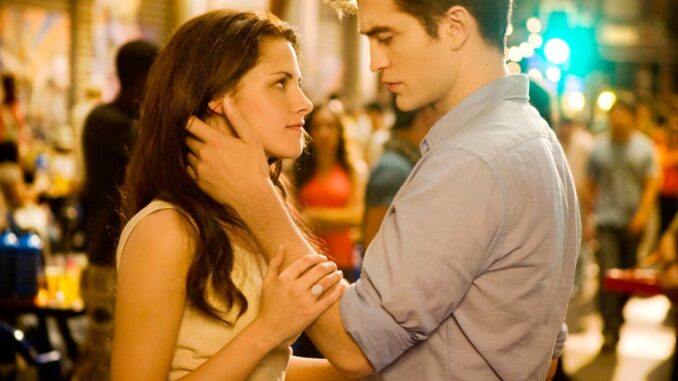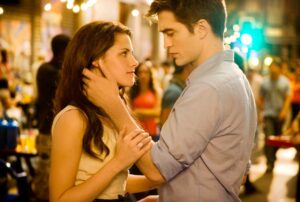
‘Twilight’ retelling ‘Midnight Sun’ centers Edward. But it’s really a love letter to fans.
You could argue that “Midnight Sun” is unnecessary and that Edward is kind of a drip. But it’s clear that Stephenie Meyer and her readers haven’t gotten tired of each other yet.
Stephenie Meyer’s much-anticipated new book, “Midnight Sun,” retells her first bestselling vampire novel, “Twilight,” from the perspective of the perfectly pale, angsty heartthrob Edward Cullen. Though fans will be thrilled that “Midnight Sun” is finally available after more than a decade of waiting, the novel, perhaps inevitably, lacks much of the freshness and yearning magic of the original, Bella Swan-narrated version.
The new book does, however, unexpectedly and rather wonderfully, suggest that the Bella-Edward relationship was never the central love affair of the “Twilight” series. Humans and vampires may gaze meaningfully into each other’s eyes, but the true passion in the books is Meyer’s love for her readers — and their love for her.Meyer’s last reworking of “Twilight,” the 2015 novel “Life and Death,” switched the genders of the protagonists and rejiggered some plot elements. “Midnight Sun” is a more faithful retelling, in which only the point of view has been changed. Once again, Edward, a mind-reading vampire who has sworn off human blood, is pretending to be a normal high school junior. Once again, transfer student Bella Swan shows up in his class and her incredibly appetizing scent almost makes him lose control of his appetite and murder her.

But (once again) he restrains himself and soon falls in more conventional love with her. He sneaks into her room at night to watch her sleep, drives her around in his Volvo, introduces her to his family, takes her to a game of vampire baseball (yes, vampire baseball) and rescues her from various human and vampire marauders. Also, they declare their undying love for each other repeatedly.Meyer’s work has always been steeped in fan-fiction traditions, and her loyal readers will no doubt enjoy the obsessive restaging of each glance in the lunchroom and each electric touch during biology class. But, unfortunately, the more you look through Edward’s black, eerie vampire eyes, the more it becomes clear that the mundane human protagonist was more interesting all along.
Bella has no vampire super strength or super speed. She’s so clumsy that she hurts herself playing badminton and so relentlessly shy and self-effacing that she spends much of her time trying desperately not to be noticed. But she also has a kind of transcendent, absolute commitment to her own desires, which is, by turns, comic, frustrating and inspiring. Once Bella decides she wants Edward, she wants Edward, cryptic warnings and disapproving vampire relations be damned. Much of the fun of the original “Twilight” is in how Bella refuses to be swayed from her pursuit of romance, no matter what magic and horror Meyer throws at her. Few people of any gender in literature know their own minds the way Bella knows hers.
Much of the fun of the original “Twilight” is in how Bella refuses to be swayed from her pursuit of romance, no matter what magic and horror Meyer throws at her.

Bella’s “Twilight” is lit by a preposterous but exhilarating clarity of purpose. “Midnight Sun,” in contrast, sinks into a murk of bathos and indecision. Edward is convinced that his love is bad for Bella, and he is constantly trying to give her up for her own good. In the original novel, it’s fun to read around the edges of Bella’s observation and realize that eternal, wise superpowered vampire Edward is in most respects a melodramatic 17-year-old goth goofball. But it’s a lot less enjoyable to be plunged into Edward’s self-pity directly — for almost 700 pages.
Edward’s one redeeming feature is that he realizes he’s a dope and that Bella is too good for him. In that vein, much of “Midnight Sun” is devoted to Edward’s thinking about how awesome Bella is. And it’s quickly apparent that it’s not just Edward who’s dazzled; Meyer is gaga over Bella, too.
The scenes in which Edward sneaks into Bella’s room to watch her while she sleeps have often, and justifiably, been criticized as creepy and stalkerish. They’re off-putting in “Midnight Sun,” too. But with Meyer writing in Edward’s voice, the author’s passion and her narrator’s merge, so it almost feels like we’re watching Meyer leaning over Bella’s bed or admiringly checking out the books on her shelves (much Austen, much Brontë).
